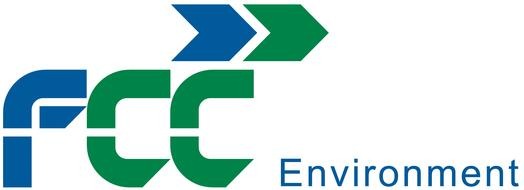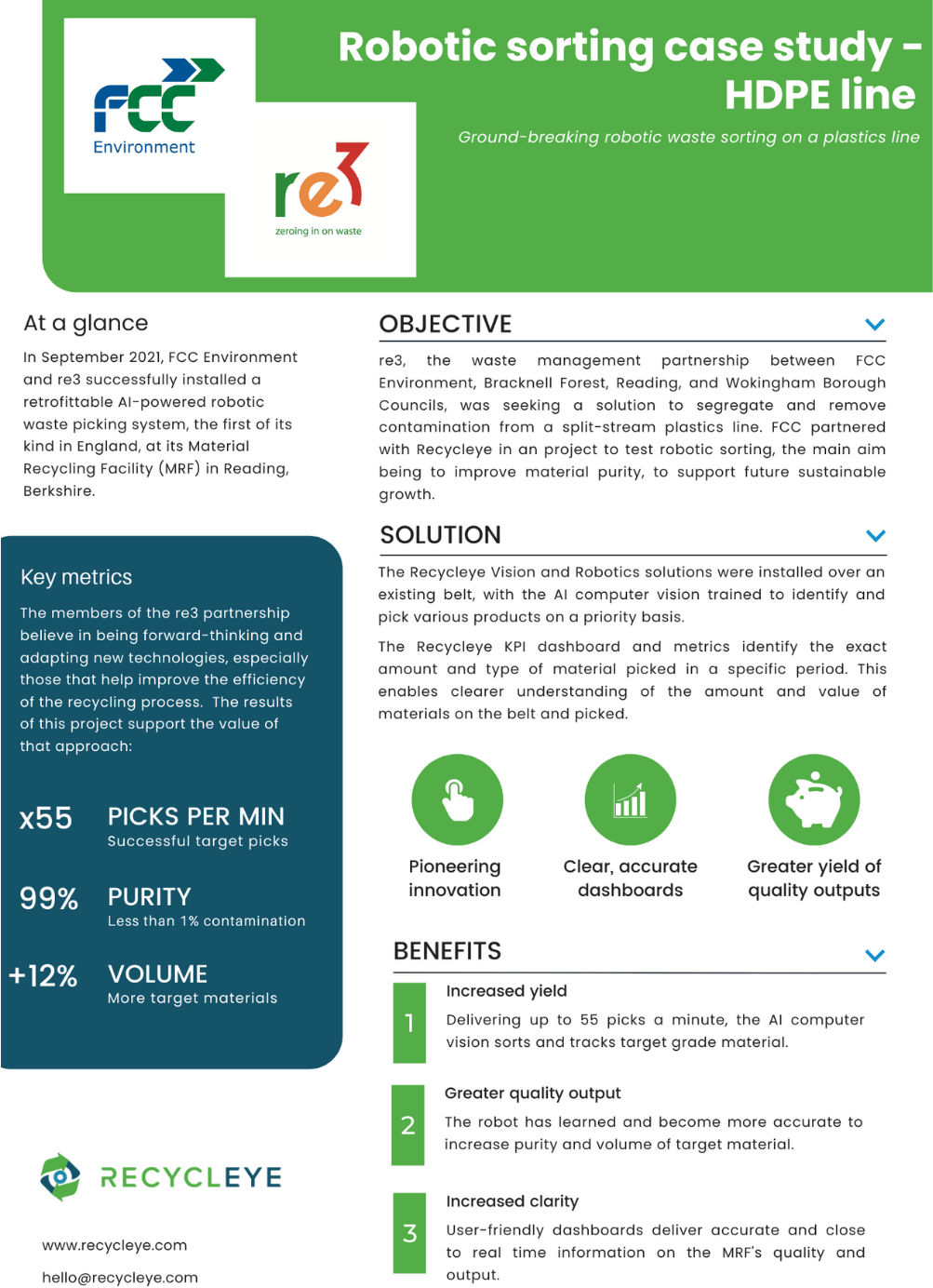In September 2021, FCC Environment and re3 successfully installed a Recycleye retrofittable AI-powered robotic waste picking system.
This was the first of its kind in England, running at the FCC re3 Material Recycling Facility (MRF) in Reading, Berkshire.
The results produced by the robot on an HDPE line are outlined in our case study.

Project overview
re3, the waste management partnership between FCC Environment, Bracknell Forest, Reading, and Wokingham Borough Councils, was seeking a solution to segregate and remove contamination from a split-stream plastics line. FCC partnered with Recycleye in an project to test robotic sorting, the main aim being to improve material purity, to support future sustainable growth.
Key Metrics
The Recycleye Vision and Robotics solutions were installed over an existing belt, with the AI computer vision trained to identify and pick various products on a priority basis. The Recycleye KPI dashboard and metrics identify the exact amount and type of material picked in a specific period. This enables clearer understanding of the amount and value of materials on the belt and picked.
“The robot, frame and safety equipment was able to be built within the MRF cabin with no heavy lifting equipment or big disruption.
Less than 1% contamination, that’s brilliant, really great performance”.
Rory Brien, FCC for re3 General Manager
Solution
The members of the re3 partnership believe in being forward-thinking and adapting new technologies, especially those that help improve the efficiency of the recycling process. The results of this project support the value of that approach:
- An average of 55 successful picks per minute of target materials
- Purity of 99% with less than 1% contamination
- An increase of 12% by Volume
Benefits
- Increased yield from target material, sorted and tracked by AI-driven computer vision system.
- Greater quality output – as the robot learned and became more accurate, purity and target material volume increased
- Increased clarity from user-friendly dashboards that deliver accurate and close to real-time information on the MRF’s output
